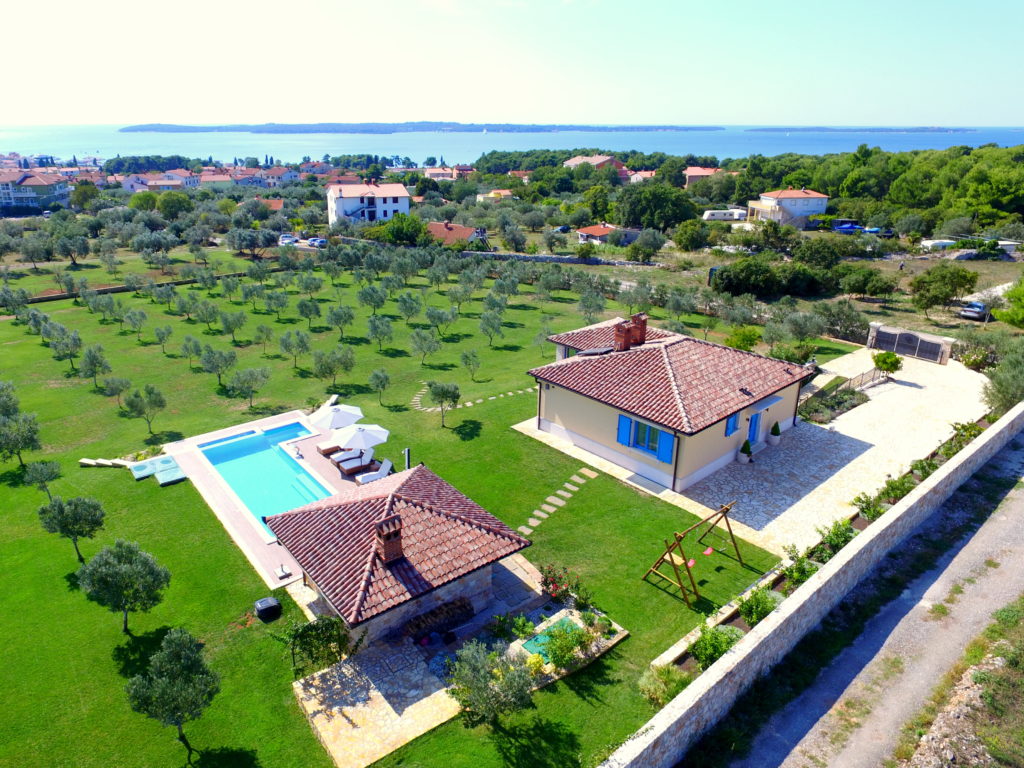Real Estate agents understand that the competition to sell properties can be fierce. It is sometimes difficult to stand out from all other real estate listings. Flyers, yard signs, classified ads, and other traditional methods of selling real estate are still used and can be effective, but their reach is limited. Now, because most buyers today are checking out properties online, the marketing part has clearly evolved. For marketing to be successful, incorporating new technology like using drones has been a need.
Advantages of Using Drones to Market Real Estate
Real estate is said to be one of the largest industries that capitalize on drone technology, especially because it is used in aerial photography. Here are some benefits real estate agents, brokers, and sellers gain from using a camera drone in marketing properties:
1. Creates more interesting and compelling images and videos
Drones can take shots of homes, properties, and neighborhoods that are never before imagined. It can also show-off the entire property and could capture the entire area in one photo or video to show them how big it really is. Property listings with dramatic drone photography and video attract more potential buyers since the coverage adds a “wow” factor to the property. Adding aerial photographs to your standard, ground-based photos enables buyers to gain a better overview of the house, garages, sheds, yard and other features of the property you’re selling.
A high-quality camera drone can create amazing shots of a property more easily by combining GPS-programmed flight paths with point-of-interest camera targeting. Plus, drone shots look incredibly professional too.
2. Makes property stand out from the competition
As mentioned earlier, the real estate competition is steep. To draw buyers, they must be interested in simply looking at a photo. Most real estate websites allow you to upload many photos of the property you’re selling but only one image is displayed when users are browsing search results. So, selecting an amazing aerial photograph taken by a drone as the featured image can surely make your listing stand out. Plus, it also attracts more shares, especially on social media. Even non-buyers would share a house listing just because it looks pretty, which can potentially attract their friends and family who are actually looking for a house.
3. Allows realtors to show distances to amenities and other important locations
Instead of simply shooting the property, you can also shoot footages of the local neighborhood and the amenities close to the property. Is there a beach, a beautiful park or a community pool near your listing? Are there schools, restaurants, grocery shops or gas stations nearby? Are there sidewalks and is the property close to the roads? Showcase it through the drone. Flyers can only mention how many minutes away the property is from important locations, but drone photography can provide an actual picture to show that.
4. Makes aerial imagery more affordable
Before the drones we have today, aerial photographs can only be taken by hiring a small plane or helicopter to fly you around. Because it costs thousands of dollars, this was only limited to high-end properties. Now, price is no longer an issue. Camera drones start at a few hundred dollars to more than $1000, but you can also hire a drone photographer if you are not willing to spend on a drone.
Tips for Using Drones in Real Estate Sales
Now you know that drones can be your perfect business tool, don’t just go get a drone and shoot. Whether you’ll be using the drone yourself or you’re hiring an operator, here are a few tips to remember before you do your first drone shoot:
1. Hire a drone professional
Unless you’re a drone pro yourself, it’s preferable that you hire a drone professional. A beginner can take many hours and even weeks of practice just to learn how to fly a drone smoothly and properly – add to that the practice needed to take great shots in short flights, again and again. We’re not saying it’s that hard to learn to fly and shoot great images and videos with a drone, but if you need to sell the property soon, it’s not the time for experimentation.
Pricing for drone photography can vary widely depending on the skill of photographer, location, amount of editing needed and difficulty of shooting.
2. Use a drone with a gimbal
You need a drone with a gimbal to keep the camera steady. A gimbal is a mechanical device that keeps the camera level, reduces vibration and stabilizes the camera to enable high-quality photos and videos. A 3-axis gimbal is recommended, since it can adjust in three directions such as forward/backward, up/down, and left/right, giving you complete control of the camera movement.
3. Plan your flight
Prepare a flight plan and a camera plan in advance, since drone flying times are limited. Most drones will run out of battery life after 10 to 20 minutes of flight. Before you fly your drone, make sure you’ve mapped out each direction where your drone should go and the camera positions you should set.
4. Take long, steady shots and repeat
If you want to shoot a 1-minute video, capture two to three 90-second trips in a row. Whenever you’re done shooting a video, don’t stop filming right away – wait for 10 seconds before you press the stop button. Also, if you’re shooting important footages, shoot the same area 2-3 times. There are changes in lighting, weather, and vibration that you may not notice via your controller, so it’s best to get as much footage as possible. You can edit out the bad and excess parts later.
5. Fly with the wind
If it’s windy and you have to shoot, allow the drone to move naturally with the air instead of going against the air current. Most quadcopters don’t fly well in high wind speeds, not just because it needs to fight the wind, but also because of turbulence increases. Your best bet is to shoot during near-windless days.
Rules to Follow for using Drones for Real Estate
You need a legal permit to fly a drone for real estate photography. Since you’ll be using it for commercial purposes, you need a certification, besides the usual registration with the Federal Aviation Administration (FAA). If you’re hiring a drone pilot, make sure he/she has the proper requirements.
To fly a drone for real estate marketing or inspection, a drone pilot must:
- Have Part 107 certification – Any pilot who wishes to fly a drone for commercial purposes must have FAA UAV operator’s certificate per Part 107 of Title 14 of the Code of Federal Regulation (14 CFR). To get this certification, here’s what you need:
- You must be at least 16 years old and above, and must be able to read, write, speak and understand English
- You must be in a good physical and mental condition to safely operate a UAV.
- You must pass the initial aeronautical knowledge test at an FAA-approved Knowledge Testing Center
- You must complete the FAA Form 8710-13 for a remote pilot certificate using the FAA’s online rating system and your completed test exam ID.
- You must submit a criminal background check through the Transportation Security Administration (TSA).
- You will receive an email from the FAA confirming that you’ve completed the TSA security background check. Print your temporary pilot certificate (good for 120 days) following their instructions.
- Once all other processing is complete, the FAA will send you your permanent remote pilot certificate that is renewable every two years.
- Be aware of the no-drone zones – Drones commercially registered for real estate use must stick to residential areas in general and must avoid areas where UAVs are strictly prohibited.
- Be ethical – Be responsible for flying your own drone. Don’t fly it over any private property without the permission of the owner. Avoid flying it over crowds. Don’t let kids or animals chase your drone as you shoot to keep safe and avoid damages and accidents.

